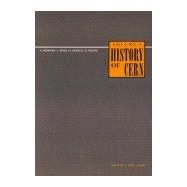
| Preface | v | ||||
| Contents | xiii | ||||
| Remarks on the notes and bibliographies | xviii | ||||
|
xix | ||||
|
xxi | ||||
| PART I. THE POST-WAR EMERGENCE OF HIGH-ENERGY PHYSICS | |||||
|
3 | (60) | |||
|
|||||
|
4 | (7) | |||
|
11 | (2) | |||
|
13 | (11) | |||
|
24 | (8) | |||
|
32 | (9) | |||
|
41 | (22) | |||
| PART II. THE PREHISTORY OF CERN, 1949-FEBRUARY 1952 | |||||
|
63 | (34) | |||
|
|||||
|
64 | (5) | |||
|
69 | (3) | |||
|
72 | (3) | |||
|
75 | (7) | |||
|
82 | (6) | |||
|
88 | (9) | |||
|
97 | (26) | |||
|
|||||
|
98 | (3) | |||
|
101 | (8) | |||
|
109 | (3) | |||
|
112 | (4) | |||
|
116 | (7) | |||
|
123 | (24) | |||
|
|||||
|
124 | (6) | |||
|
130 | (4) | |||
|
134 | (6) | |||
|
140 | (1) | |||
|
141 | (6) | |||
|
147 | (32) | |||
|
|||||
|
148 | (9) | |||
|
157 | (6) | |||
|
163 | (6) | |||
|
169 | (10) | |||
|
179 | (30) | |||
|
|||||
|
180 | (8) | |||
|
188 | (6) | |||
|
194 | (4) | |||
|
198 | (11) | |||
| PART III. THE PROVISIONAL CERN, FEBRUARY 1952-OCTOBER 1954 | |||||
|
209 | (28) | |||
|
|||||
|
211 | (1) | |||
|
211 | (2) | |||
|
213 | (1) | |||
|
213 | (2) | |||
|
215 | (1) | |||
|
216 | (3) | |||
|
219 | (3) | |||
|
222 | (1) | |||
|
223 | (2) | |||
|
225 | (1) | |||
|
226 | (2) | |||
|
228 | (9) | |||
|
231 | (1) | |||
|
231 | (1) | |||
|
232 | (1) | |||
|
232 | (5) | |||
|
237 | (56) | |||
|
|||||
|
238 | (8) | |||
|
246 | (6) | |||
|
252 | (9) | |||
|
261 | (12) | |||
|
273 | (9) | |||
|
282 | (11) | |||
| Bibliography for Parts II and III | 293 | (252) | |||
|
|||||
|
|||||
|
|||||
| PART IV. NATIONAL DECISIONS TO JOIN CERN | |||||
|
303 | (50) | |||
|
|||||
|
305 | (4) | |||
|
309 | (8) | |||
|
317 | (11) | |||
|
328 | (6) | |||
|
334 | (8) | |||
|
342 | (11) | |||
|
353 | (30) | |||
|
|||||
|
354 | (5) | |||
|
359 | (10) | |||
|
369 | (14) | |||
|
383 | (48) | |||
|
|||||
|
384 | (9) | |||
|
393 | (6) | |||
|
399 | (6) | |||
|
405 | (8) | |||
|
413 | (18) | |||
|
431 | (44) | |||
|
|||||
|
433 | (5) | |||
|
438 | (7) | |||
|
445 | (9) | |||
|
454 | (8) | |||
|
462 | (13) | |||
|
475 | (48) | |||
|
|||||
|
477 | (5) | |||
|
482 | (5) | |||
|
487 | (3) | |||
|
490 | (5) | |||
|
495 | (28) | |||
|
503 | (3) | |||
|
506 | (17) | |||
| PART V. CONCLUDING REMARKS | |||||
|
523 | (22) | |||
|
|||||
|
|||||
|
524 | (1) | |||
|
525 | (4) | |||
|
529 | (1) | |||
|
530 | (2) | |||
|
532 | (3) | |||
|
535 | (1) | |||
|
536 | (1) | |||
|
537 | (2) | |||
|
539 | (6) | |||
| Appendix 1. Who's who in the foundation of CERN | 545 | (22) | |||
|
|||||
| Appendix 2. Chronology of events | 567 | (20) | |||
|
|||||
|
|||||
| Name index | 587 | (7) | |||
| Thematic subject index | 594 |
The New copy of this book will include any supplemental materials advertised. Please check the title of the book to determine if it should include any access cards, study guides, lab manuals, CDs, etc.
The Used, Rental and eBook copies of this book are not guaranteed to include any supplemental materials. Typically, only the book itself is included. This is true even if the title states it includes any access cards, study guides, lab manuals, CDs, etc.